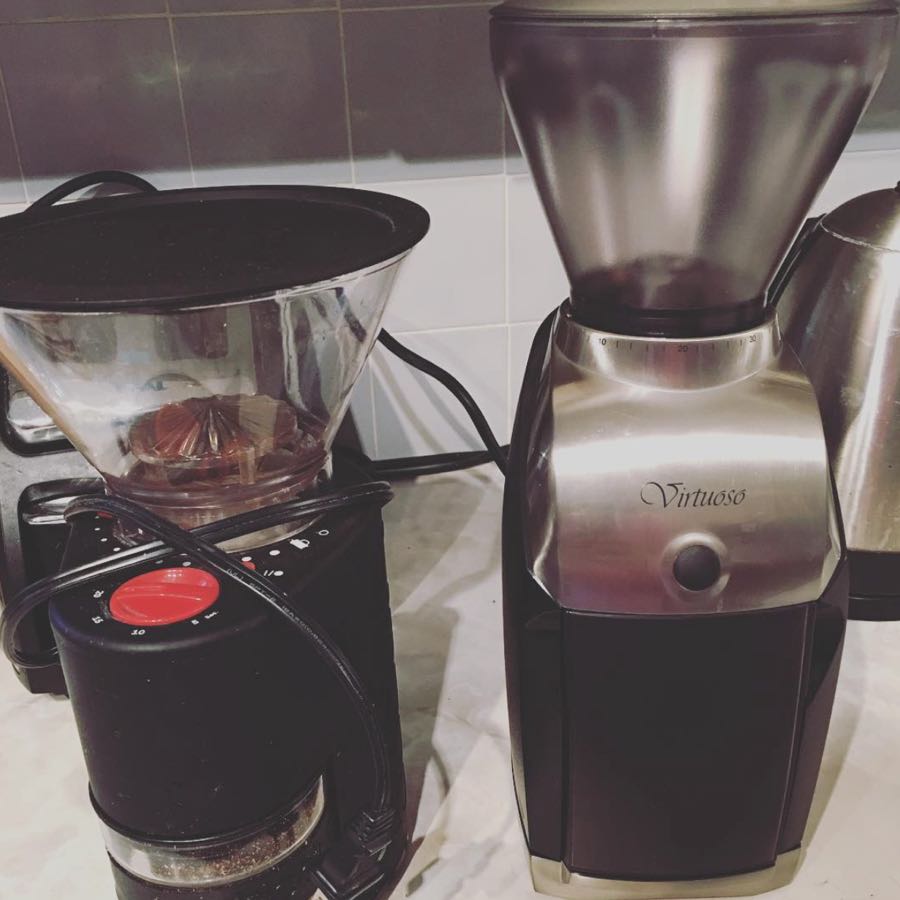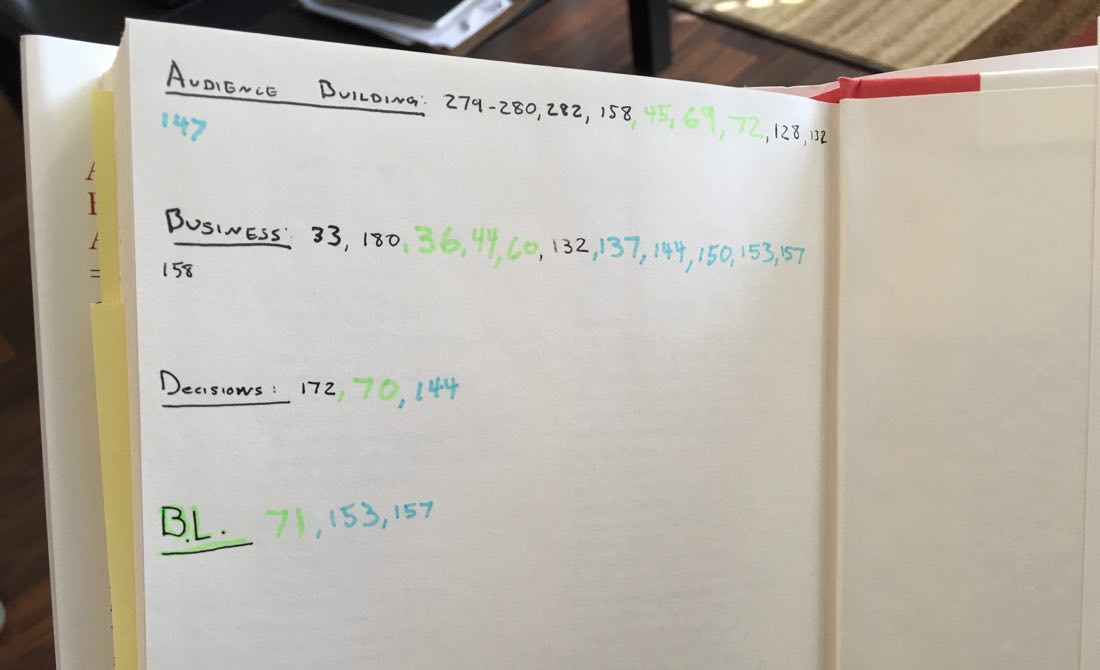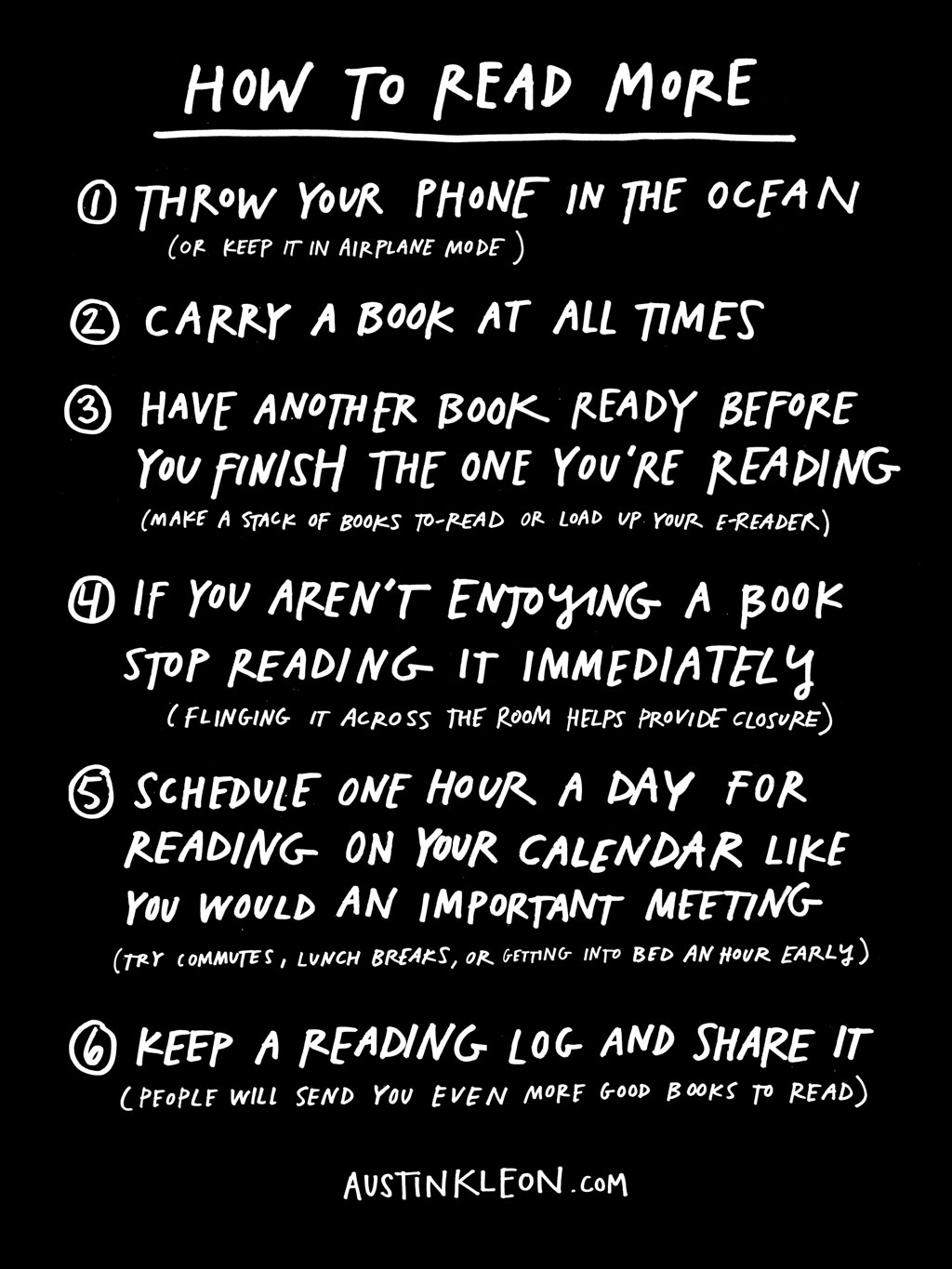You may remember a few weeks back when I shared my top four writing tools.
That article brought about some additional questions from folks regarding my writing workflows, etc. And so I’m going to answer those questions here.
If you have any additional questions you’d like to see in this article, just ping me on Twitter.
A Brief Aside About “Workflows”
Eleven years ago I bought my first Mac. And I also bought my first copy of Photoshop.
But those tools, in and of themselves, didn’t make me a designer. It took me a while to figure out what I was doing, and a little while longer to start doing any actual design work for clients.
The tools in and of themselves don’t make an artist.
Which is why, in some ways, talking about tools and workflows isn’t all that productive. Because it’s not about the tools we use.
Rather, it’s our tenacity to show up and do our best work every day. It’s that fight to stay creative that makes the difference.
However…
I myself have gleaned so much from hearing about other people’s creative process. In part because hearing about someone else’s process helps remind me that we’re all just folks.
Moreover, I have improved many areas of my own workflows by hearing how someone else gets the job done. And so, hopefully, today I can give you some ideas and motivation of your own.
Q: When you started out, what was your hardest challenge when posting regularly?
The hardest challenge to posting regularly was knowing what to write about. I used to do it all wrong.
I would sit down in the morning with no plan about what to write about.
In part, this was because most of the things I wrote about were related to the current tech and design news cycle. But also, I just didn’t have a plan. I hardly ever thought ahead.
So, each day, I first had to observe what the latest happenings were in the news. Then, if anything cool was happening, I’d write about it or link to it.
Since I didn’t have a plan for what to write about, I also didn’t have a set time to write each day.
My approach since then has changed significantly.
For one, I no longer write about the latest in tech and design. I am still deeply interested in these topics (hence running two entirely other websites dedicated to them), but now, when I do write about them here on shawnblanc.net, it’s with a focus on doing our best creative work.
These days, my biggest challenge to writing regularly is the work at the beginning of the month to map out my editorial plan for the upcoming 3-4 weeks.
Some of the best — and most profitable — writing I’ve done has been a result of having an overarching theme and then showing up consistently to write about it.
For example, this is how Delight is in the Details came to be. It’s also how I created The Focus Course (I wrote the 75,000 words for the 40-day course in a span of 42 days).
My advice for those wanting to write regularly is simple:
- Have a plan for your topics in advance.
- Have a set time each day for when you will write. Thirty minutes is more than enough to get started.
With those two things in place, all that’s left is to show up and do the work.
Q: As you write The Note the night before, what’s your big picture for what to write about?
(Quick context for this question: as you may or may not know, at the end of my work day, I leave a note out for the topic I’m going to write about tomorrow.)
As I mentioned in the answer to the previous question, the big picture for the note comes from planning ahead.
For example, in January I spent several weeks on the topic of Margin. Over this period I wrote a slew of articles and podcast episodes.
But, before I began writing and publishing, I first sat down to plan it all out. This included figuring out what topics I wanted to cover, what order I wanted them to be published in, etc.
Then, once I had that plan in place, I just made sure I was writing each article ahead of time so it could be published according to my schedule.
For another example, over the past month I’ve been writing about workflows and time management. This topic was chosen in direct response to feedback I’ve received from my readers.
I asked members of The Focus Course and The Elements of Focus class what they were most challenged by. One of the most common areas of feedback was related to time management.
So I took that feedback and built a class just for them.
I also took several weeks to write publicly about the topics of distractions, meetings, procrastination, focus, workflows, scheduling, and more.
What’s great about this approach to writing is that it’s like writing with the lights on.
I’m not guessing about a topic. I’m not wondering if what I have to say is relevant to my readership. I know for a fact that I’m directly answering their questions and helping them as much as I possibly can.
It makes it easier for me, as a writer, because then I’m not pining for inspiration. And it makes my work more valuable to you, the reader, because I’m doing work in direct response to your challenges and interests.
Q: Where do you capture your ideas?
All of my ideas go into Simplenote.
I’ve been using Simplenote since the Stone Age. Back when the only other alternative was the iOS notes app that used IMAP syncing and its Legal-Paper-plus-Marker-Felt aesthetic.
This was back when there was no such thing as a Retina display. And the App Store was not yet packed to the rafters with markdown note-taking apps powered by Dropbox-sync. And dinosaurs still roamed the earth.
What I love about Simplenote is that it’s fast and reliable…
I have hundreds and hundreds and hundreds of notes. I’ve been using it for the better part of a decade. And I’ve never lost a single character of text.
Simplenote is ridiculously fast. Especially when it comes to searching for a past note. I can find just any note in about 5 seconds or less.
Now, as for the whole idea capture thing… in addition to Simplenote, I also use a Baron Fig notebook. Since so much of the work I do is with pixels, I love to have a pen and paper nearby as well (more on this in a bit).
But, perhaps ironically, I treat my digital notes as the “official” copy and my analog notes as the temporary one. Most ideas that I write into my Baron Fig get copied into Simplenote.
All this to say, when it comes to capturing ideas, the tools aren’t all that important.
What is important is that you’ve got a commitment to coming up with as many terrible ideas as possible. Beyond that, all you really need is somewhere to put them so you can get back to work.
(Side note: If you need some help with scheduling and time management, I’ve got just the thing.)
Q: How do you schedule your posts? What is the frequency of your posts?
With Tools & Toys and The Sweet Setup, we manage our editorial calendar in a shared iCal (do people still say iCal?) calendar.
For all the writing and podcasting I do on shawnblanc.net, my editorial calendar is a giant sheet of self-stick easel pad paper, with the month drawn out and then yellow sticky notes on the dates with the articles.
This sticky note calendar is a new change to my writing and publishing workflow. Because, at the beginning of this year, I hired my first full-time employee. Isaac and I work out of the same office, so we have the month’s calendar up on the wall.
Right now my posting frequency looks like this:
- Monday: Sometimes I publish an article, not always.
- Tuesday: Shawn Today podcast episode
- Wednesdays: Newsletter (and corresponding article if nothing was published Monday)
- Thursday: Shawn Today podcast episode
- Friday: Fantastic Friday
For one, as long-time readers have observed, over the past year and a half, my publishing frequency has changed quite significantly. I write less frequently, but mostly publish articles (as opposed to articles and links).
Also, as a side-note, I’m beginning the work of making some massive changes to The Focus Course website. Instead of the website being home to only one course, we are working to expanding what the site can do and the types of content we publish there. But more on that another day…
All that to say, my editorial schedule seems to always be in flux. It’s an ongoing experiment in how to best balance the ideal output for myself with the ideal pacing and content topics for you, the reader.
Q: Does markdown help you write?
Yes.
I write everything in Markdown. Even personal emails and text messages.
What’s great about Markdown is, as John Gruber said himself, it’s the feel of it, not the think of it.
Markdown is far faster to write than HTML and it’s easier to read.
Q: Do you shuffle Monument Valley every morning or listen straight through? Is it on repeat?
(A little bit of context to this question: I listen to the Monument Valley soundtrack every morning as my “writing music”.)
To answer the question, I listen to it straight through, on repeat. (It’s playing right now, in fact.)
Since I usually write for a couple hours each day, I probably listen to the soundtrack at least 2-3 times through. And (doing the math…) I’ve first began listening to this album in early 2015. So, gosh, I’ve probably heard this soundtrack well over 1,000 times.
Q: How do you use OmniFocus with a physical notebook?
The short answer is this:
- OmniFocus is where I capture all of my to-do items, and it’s where I put everything with a due date in the future.
- My notebook (a Baron Fig confidant) is where I write out my tasks and schedule for each day.
What that looks like in practice is that each morning I sit down with my notebook and OmniFocus.
First I write down my one or two most important tasks. Then I open up OmniFocus to see what (if anything) is due today. Then I schedule out every minute of my day.
I usually schedule a 30-60 minute window for doing “OF Admin” which is a time to work through the administrative or miscellaneous action items that are in my OmniFocus to-do list.
More Writing Resources
If you’re on the hunt for additional resources on writing, here are some recommendations:
- My friend, Sean McCabe, has a course coming out soon. It’s called Supercharge Your Writing, and it’s for anyone who has a product or service they sell and wants to improve their writing chops in order to grow their business. (It’s the kind of course I wish I’d had put together first.)
-
Stephen King’s book, On Writing, is absolutely fantastic.
-
Also highly recommended is The War of Art by Steven Pressfield.
And, if you have any further questions beyond what’s here, just ping me on Twitter.


